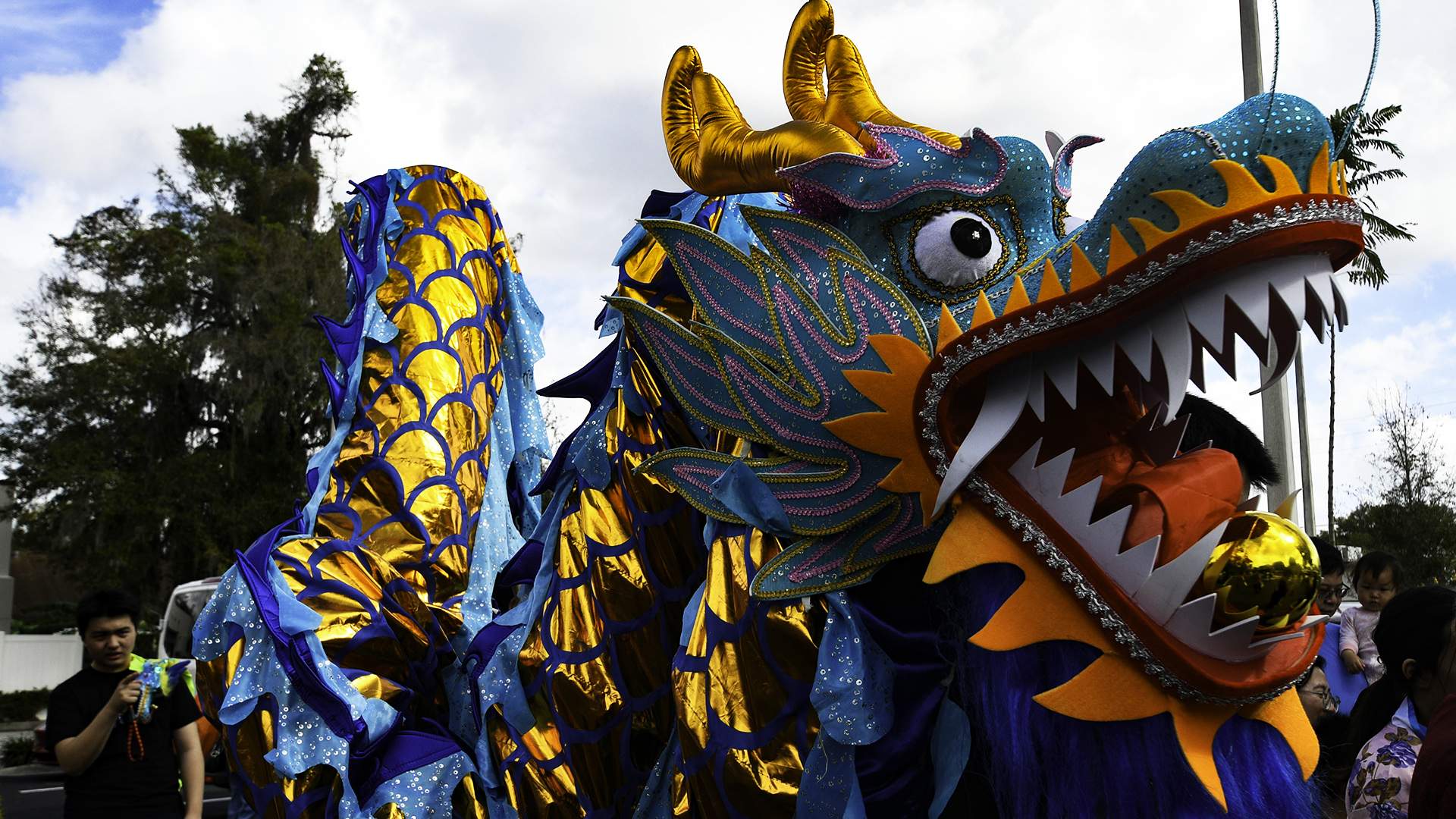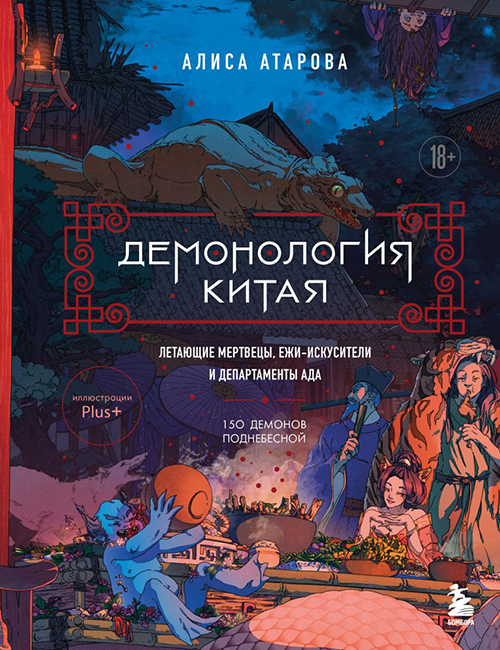The Terrible Nanny: How to use jujube when meeting Jiangshi

Everything Chinese nowadays arouses sincere and genuine interest among Russians. We are already well acquainted with cars, products, electronics and other material values from China, it's time to learn more about the spiritual life of the Celestial Empire. Critic Lidia Maslova presents the book of the week, especially for Izvestia.
Alice Atarova
"The demonology of China. The Flying Dead, the Tempting hedgehogs, and the Departments of Hell"
Moscow: Bombora, 2025. 256 p.
In the conclusion of her book "The Demonology of China," Chinese scholar and translator Alisa Atarova somewhat confusedly admits that this is her "first experience of an almost-non-artistic-but-still-artistic text," which does not look very much like a scientific treatise, and also apologizes for "joking": "... are demons objects?" scientific research? Based on these considerations, I did not make this book too serious." There are indeed some attempts at humor in the book, for example, when Atarova simulates a likely encounter between the reader and a Chinese zombie called "jiangshi" (literally, "revived corpse"): "If you suddenly — well, you never know — fell into the clutches of Jiangshi, then you will be saved by jujube (Chinese date). It is necessary to twist around and drive seven jujubes directly into the spine of the corpse. The ancient peasants say that the way is working. However, I don't recommend repeating it, it's better to try not to fall into the clutches of the Jiangshi, because they squeeze a living person until they crush them."

There are ironic intonations in the story about Changui's "ghost accomplice" - this is a poor guy who was killed by a tiger. After such a brutal death, the tiger's victim is held hostage by a predator and is forced to look for a new victim to replace himself in order to free his soul for the next rebirth: "... to eke out his miserable existence, he must help the tiger to eat, and also watch the beast devour people alive through his fault!" Atarova cites a case from the collection of short stories of the VIII century "Extensive records of the amazing", which happened to one woman. For two years, she did not realize that her husband was a tiger until he got drunk with friends and took on a natural appearance, and when the deception was revealed and his wife began to joke about his tail, he took offense and ran away: "As you can see, the gentle soul of some tigers is not able to withstand any jokes. This may indicate two things: firstly, it is easy to shame a tiger for revealing his inhuman appearance, and secondly, this may be the last thing you will see in your life if he wants to silence the witnesses of shame."
But despite the author's sometimes frivolous and playful tone, in general, the "Demonology of China" fits perfectly into the framework of traditional non-fiction, which systematizes information from respected ancient Chinese sources, such as the treatise "The General Meaning of Morals and Customs" by the Eastern Han writer Ying Shao, "Subsequent Notes on the Search for Spirits" by the Jin scholar Tao Qian, "The Book of Etiquette of the Zhou Era", "Notes on the Search for spirits" by Gan Bao, "Tales of the Strange from Liao's Study" by Pu Songlin, "Notes on the Strange" by the Qing mathematician of the Southern Dynasties Zu Chongzhi, the book by the Qing poet and writer Yuan Mei "What Confucius did not say", the novel by Feng Menglong"Chronicles of the Eastern Zhou States", where Confucius is one of the characters.
By themselves, the names from the bibliographic list can excite the imagination of a person fascinated by Chinese culture. And the abundant demonological terminology, although it can be slightly confusing, sometimes caresses the ear of a lover of oriental exotics, no matter how scary many of the characters in the book may seem: "... there is an opinion that the Wanglians are the same as the Wangxiang, and Chimei can be attributed to this category, and they are all evil humanoid spirits that do not bring any benefit or goodness to people, and therefore it is better to stay away from them. <...> Mountain xiao are also a kind of wangliang."
In a chapter densely populated by anthropomorphic spirits, Xiao ("a demon with a human face and the body of a monkey, with one arm and one leg") also meets Nian, to whom we owe the tradition of celebrating the Chinese New Year. One of the most famous man-eating demons, Nian looks like a huge lion with one horn. According to a legend narrated by Atarova, in ancient times, a ferocious and voracious nanny used to go out on New Year's Eve hunting: "Most of all, he loved to feast on people and animals, so people always locked windows and doors, drove cattle into the house and did not dare to go outside until morning. One day, someone decorated his house with a red lantern, and the babysitter, seeing him, was so scared that he ran away. Since then, people realized that nannies are afraid of fire, noise, and especially red, so they began decorating houses with red lanterns for the New Year, setting off fireworks, and staying noisily awake all New Year's Eve to scare away the monster."
However, the danger can come not only from demons taking the form of large predators (in addition to the tiger, the book also considers options with a bear, wolf, fox, snakes, fish and birds), but even from a small hedgehog. "It's easy to guess that almost any animal can become a werewolf in Chinese mythology. It doesn't even take much to do this — to harm people a couple of times (or, conversely, to help), and now you will be branded a demon," Atarova says ironically and cites a story from the "Notes of a tea Drinker about the Unusual" by Qing writer Li Qingchen, telling about another woman who prevented her husband from killing a white hedgehog that had settled in their backyard. The rescued hedgehog turned into a young man who began to appear to the woman in erotic dreams to "pay his respects and gratitude," but it all ended sadly, despite the efforts of the invited Taoist to cleanse the house of filth with the help of incense. "The moral of this story," the author of the book sums up, "is probably that you shouldn't trust even cute white hedgehogs, because demons are not kind by nature."
Переведено сервисом «Яндекс Переводчик»




